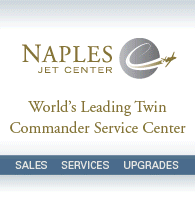The Aero Commander Model 500B was the tenth one to be placed into production. The first 19 were built by the Aero Design & Engineering Company, a subsidiary of the Rockwell-Standard Corporation, at Bethany (Wiley Post Airport) in Oklahoma City, Oklahoma. The next 109 were produced by Aero Commander Inc., also a subsidiary of Rockwell-Standard Corporation, and the last 89 were built by the Aero Commander Division of Rockwell-Standard Corporation.
All 217 examples were built between April 1960 and April 1966, with serial numbers in the range 893-1 through 1631-217.
Of these, 31 were initially certified in 1960; 45 in 1961; 31 in 1962; 27 in 1963; 39 in 1964; 30 in 1965; and 14 in 1966.
Additionally, 21 examples have been converted from Models 500A.
A factory document describes the Model 500B, under Wing Drawing 5170045, as “the same as the Model 500A except the gross weight changed from 6,250 to 6,750 pounds and the engines were changed from Continental IO-470-M to Lycoming IO-540-B1A5. The pilot entrance door was added as an option. Certification date was July 13th 1960.”
The Model 500B was indeed certified on July 13, 1960 under Type Certificate 6A1. It has 290 hp Lycoming IO-540-series engines, with 80-inch-diameter three-blade Hartzell HC-A3XK-2-series propeller hubs with 8433-4 blades. This engine series powered more Commanders than any other.
Gross weight of the 500B is 6,750 pounds.
Up to Serial Number 1549-196, the control surfaces were of the beaded or corrugated type, but from Serial Number 1551-197 they were flush skinned, as was developed for the Turbo Commander 680T.

Scanned from an un-numbered negative in a factory collection, N1189Z is Serial Number 1559-199 and is seen here finished in factory paint design “B”, in Bluetone White, Prussian Blue and Smoky Pearl at Bethany-Wiley Post Airport. It was Certificated on August 31, 1965 and sold to Executive Aircraft Corp., of Indianapolis on September 16. Note the smooth control surfaces, which replaced the corrugated, or beaded, examples from s/n 1551-197 on.
In 1961 an eight-place “airliner” version was introduced under Factory Drawing 6100023. This consisted of additional under-floor support structure to allow installation of an aft-facing three-place bench immediately aft of the pilot’s seat. This allowed an acceptable amount of legroom between that bench and another forward-facing 3-place bench at the rear of the cabin. Pilot and crew access was through the addition of a forward left-side, or “forward cabin” or “pilot entrance” door.
Many examples of the Model 500B, and indeed other models, have had modifications added to achieve a “Shrike-Alike” configuration. Popular mods are STC SA585SW for the lengthened “Miller” nose; STC SA3516WE (or Mr. RPM Drawing 1016) for cockpit overhead windows; STC SA3492WE (or Mr. RPM Drawing 1018) for a more squared vertical tip assembly; and STC SA3476WE (or Mr. RPM Drawing 1019) for a stinger tail cone. For those examples that didn’t incorporate the forward cabin door when built, STC SA666SW is another popular one, together with Commander Aero’s SA1158GL for winglets.
Barry Collman’s lifelong interest in airplanes began when he was growing up in a house located underneath the downwind leg to busy Northolt aerodrome, an R.A.F. base near London-Heathrow airport. As a young teenager he discovered airplane “spotting”–hobbyists’ observation and logging of aircraft by make, model, and registration number. The hobby began to grow into a passion as Collman joined a club of like-minded spotters. At one point he purchased a copy of the January 1966 U.S. Civil Aircraft Register, and thumbing through it came upon the Aero Commander. He was hooked. Eventually he acquired every available FAA microfiche file on Commanders, and since 1995 has made annual pilgrimages to Oklahoma City to sift through FAA records. He now has a database with more than 96,100 records as well as a collection of negatives, slides, photographs, digital images, magazines, brochures, knick-knacks–and a very understanding wife. This series on Commander production history originally was written for the Twin Commander Flight Group, of which he is an enthusiastic member.


 Scanned from an un-numbered negative in a factory collection, N6220X is Serial Number 1082-53 and is seen here finished in factory paint design #5-60, in White, Omaha Orange and Morat Green at Bethany-Wiley Post Airport. It was certificated on July 26, 1961 and sold on the same day to the International Cooperation Administration, of Washington, DC. The flag on the fin is that of the Ivory Coast; it was exported there for governmental use, where it carried the registration TU-TAA, later becoming TU-VAE, TU-TKD. The Model 500B is difficult to positively identify from the 500U and early 500S Models (s/ns up to 3050), except that up to s/n 1549-196 they had the corrugated, or beaded control surfaces. Additionally, the 500B, 500U, and 500S models have two intakes at the front of the nacelle, whereas the 560F & 680F models have three intakes.
Scanned from an un-numbered negative in a factory collection, N6220X is Serial Number 1082-53 and is seen here finished in factory paint design #5-60, in White, Omaha Orange and Morat Green at Bethany-Wiley Post Airport. It was certificated on July 26, 1961 and sold on the same day to the International Cooperation Administration, of Washington, DC. The flag on the fin is that of the Ivory Coast; it was exported there for governmental use, where it carried the registration TU-TAA, later becoming TU-VAE, TU-TKD. The Model 500B is difficult to positively identify from the 500U and early 500S Models (s/ns up to 3050), except that up to s/n 1549-196 they had the corrugated, or beaded control surfaces. Additionally, the 500B, 500U, and 500S models have two intakes at the front of the nacelle, whereas the 560F & 680F models have three intakes. 
